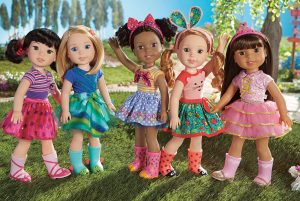Exploring The Cultural Significance Of Dolls Across Different Countries
Exploring the cultural significance of dolls across different countries reveals a rich tapestry of traditions, beliefs, and values. In Japan, for example, the Kokeshi doll represents simplicity and beauty, while in Mexico, the colorful and intricate designs of the Maria doll reflect the country’s vibrant culture. In Russia, Matryoshka dolls symbolize unity and family ties through their nesting design. Each country’s dolls tell a unique story about its history, mythology, and societal norms.
Through these miniature figures, we can gain insight into the diverse ways in which people express themselves artistically and spiritually. By examining the craftsmanship, materials used, and symbolism behind each doll, we can appreciate how they serve as cultural artifacts that connect us to our shared human experience.

Tracing The History Of Doll Making In Various Cultures
Dolls have been a significant part of various cultures for centuries, with each culture having its unique traditions and techniques for doll making. Tracing the history of doll making in different countries provides valuable insights into the diverse cultural practices and beliefs that have shaped the art form over time. From ancient Egypt to Japan, dolls have served as symbols of protection, fertility, and storytelling.
In some cultures, dolls were used in religious ceremonies or as educational tools for children. The materials used in doll making also vary from region to region, with some cultures using wood, clay, fabric, or even natural materials like corn husks or grass. By exploring the history of doll making in various cultures, we gain a deeper appreciation for the rich tapestry of human creativity and expression.

Embarking On A Fascinating Journey Through Dolls From Around The World
Embarking on a fascinating journey through dolls from around the world allows us to explore the rich cultural heritage and traditions of various countries. Each doll tells a unique story, reflecting the beliefs, customs, and values of its origin. From intricately crafted Japanese Kokeshi dolls to vibrant Mexican Mariachi dolls, each one offers a glimpse into the artistry and craftsmanship of its culture.
As we immerse ourselves in this diverse collection, we not only appreciate the beauty of these dolls but also gain a deeper understanding of the people who created them. It is through these miniature representations that we can travel across continents and time periods, connecting with different civilizations and their way of life. This cultural journey through dolls is a reminder of the universal language of creativity and imagination that transcends borders and unites us all.
Discovering The Unique Traditions And Stories Behind Dolls In Different Countries
As we embark on a cultural journey through dolls of different countries, we have the opportunity to discover the unique traditions and stories behind these cherished toys. Each doll holds a special significance within its culture, representing centuries-old customs and beliefs passed down through generations. From the intricate craftsmanship of Japanese Kokeshi dolls to the vibrant colors of Mexican Alebrijes, each doll tells a story of its homeland and the people who created it.
By exploring these cultural treasures, we gain insight into the diverse histories and values that shape societies around the world. Through understanding the symbolism and meaning behind these dolls, we can appreciate the rich tapestry of global traditions that continue to be celebrated through these beloved creations.








![HVJE7$)SU}XJGA1$%XP]@`R](https://www.msyodoll.com/wp-content/uploads/2023/10/HVJE7SUXJGA1XP@R-300x193.jpg)